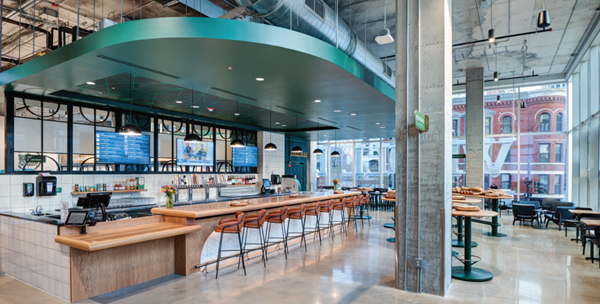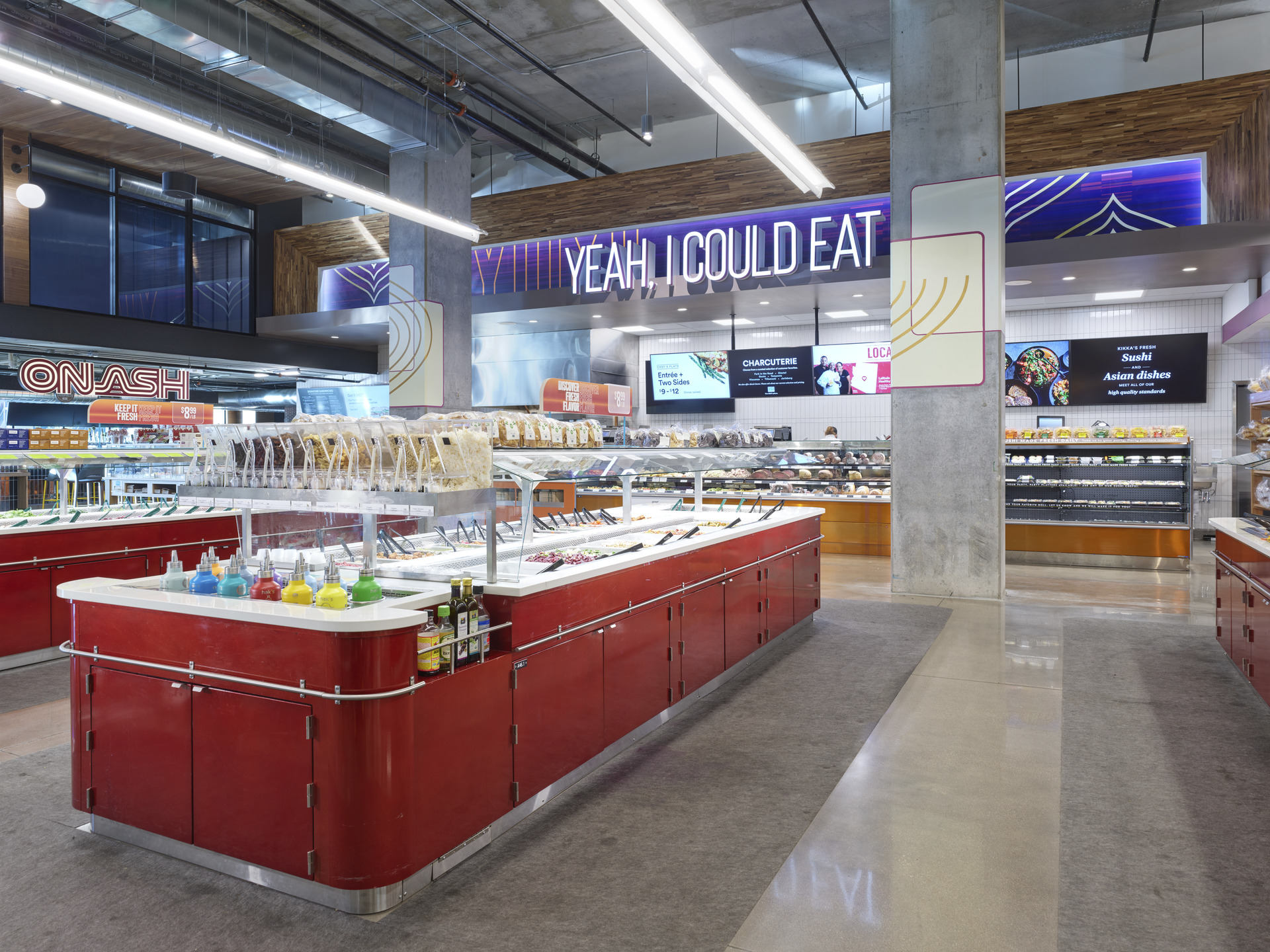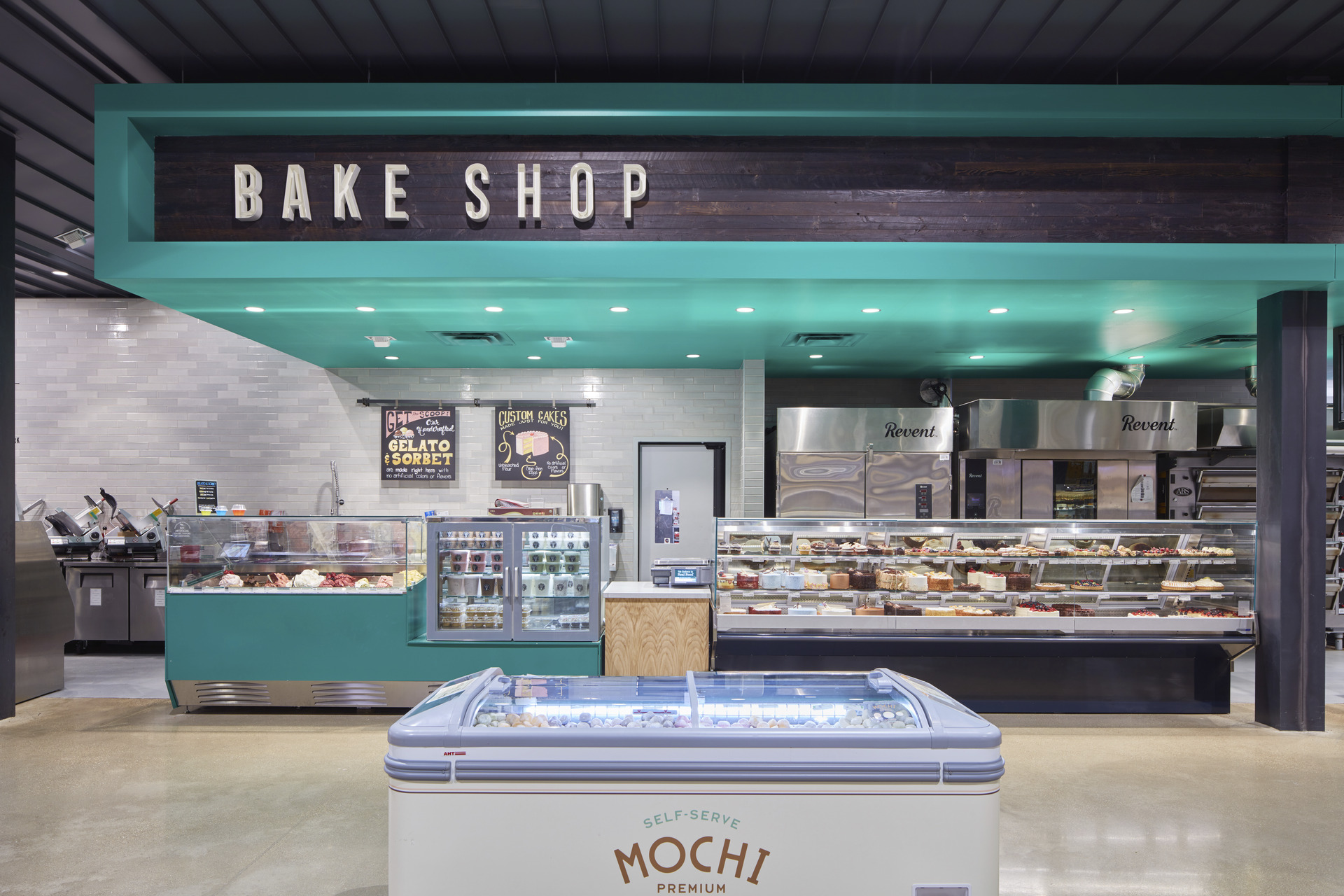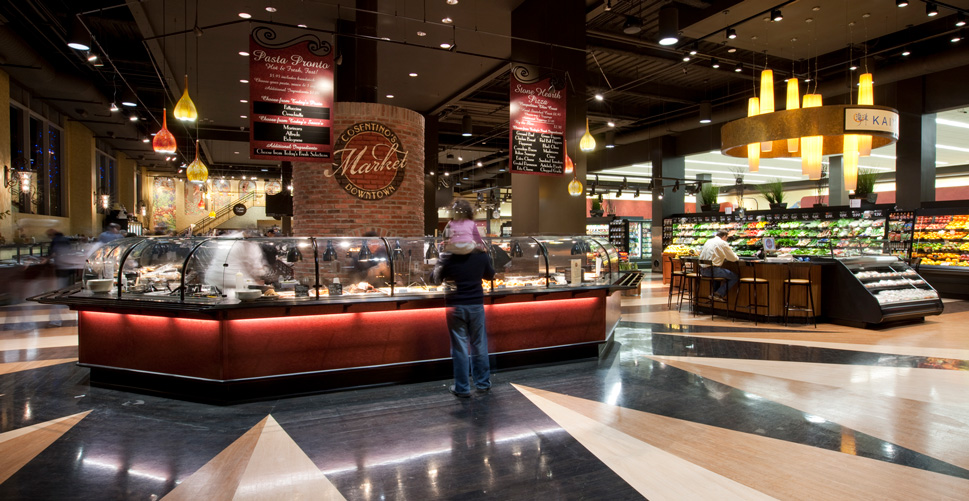Grocery Design & the Self-Checkout Dilemma
In the post-pandemic era, the influx of self-checkouts surged, and the front end of grocery stores has continued to evolve to meet the shifting demands for today’s consumers. While BRR has previously discussed front end design trends, we continue to witness an evolution of grocer’s priorities based on our work with more than a dozen grocery brands.
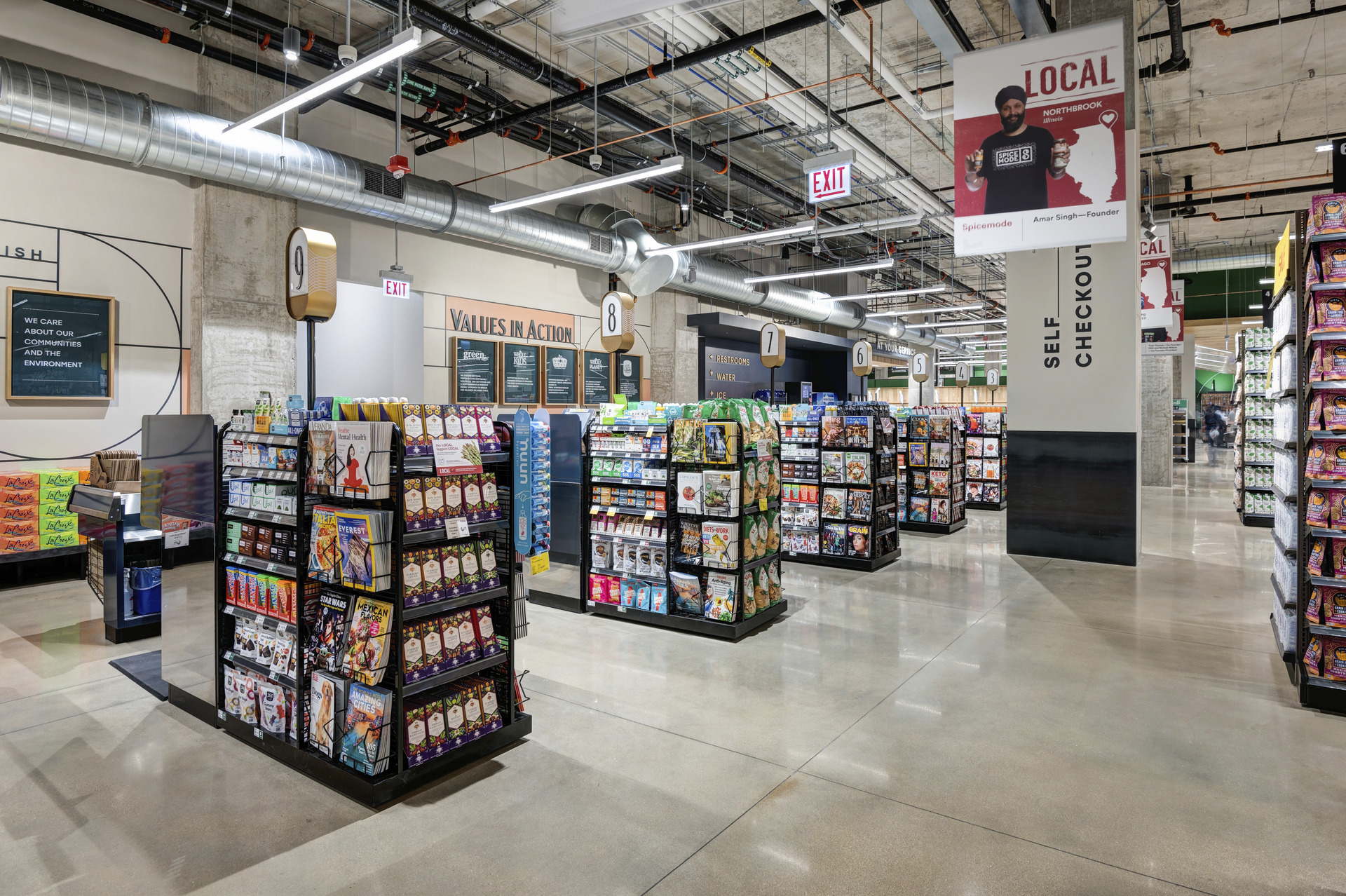
For some, self-checkouts are here to stay and BRR has worked to design the space necessary for these installations. However, other brands are removing self-checkouts entirely to implement AI-powered contactless technology, mobile app payments or reinstalling full-service checkout lines.
Whether grocers are checking in or checking out of self-checkout, these decisions are having a direct impact on store layout and design.
Maximizing the Front End
Efficiency and convenience were the initial draws of self-checkout; however, they’ve also caused issues like technical difficulties and increased theft, prompting customer demand to return to human intervention or integrate more advanced technology.
From a design perspective, a reduction in self-checkouts provides the opportunity to free up valuable space for new offerings such as coffee counters or quick-grab meal fixtures. We see grocers implementing dine-in areas for their shoppers who order from the deli counter or use self-serve bars.
To attract additional foot traffic, grocers continue to seek creative ways to interact with the community with unique food offerings, cafés with outdoor seating, sushi counters or outside merchandising. In order for these strategies to have success with the community, the front end needs to engage shoppers while meeting their individual needs.
Designing for the Online Shopper
BRR has seen grocers continue to adjust to the influx of online-only shoppers. With more retailers offering a pickup option, grocers need to carve out the appropriate amount of space dedicated to these transactions. This includes considering the method in which customers receive these orders, as well as how an employee or third-party operator fulfills them and where the orders are stored for easy accessibility.
Grocers provide designated parking spots for pickup where employees can easily deliver orders to a customer’s car. Customer service counters have become a hub for online order inquiries and as a result, the front end is now a vital transition zone between online and in-store.
This initial area can often be the main, if not the only, area that virtual shoppers interact with. The front end provides convenience for online shoppers to grab popular grocery items without having to venture too far into the store. Many brands have taken the opportunity to elevate this area with standout floral and small gift displays that entice the purchase of impulse buys.
Elevating Customer Service
As the checkout process becomes independent from employee operation, the result is a need for personalized service to elevate the grocery shopping experience.
Whether it’s detailed floral arrangements, customized cake orders or finely wrapped fresh meats, grocers have begun to steer their employee’s energy away from tasks that can be performed by tech and instead focus on tailored one-on-one attention to a customer’s individual needs.
When grocers elevate customer service and provide personalized, concierge-level attention, it creates a positive association with a brand that inspires customers to return.
The Evolution of the Customer
As the priorities of customers continue to shift and evolve, so do the customers themselves. It has become increasingly difficult for grocers to categorize customers as weekly in-store shoppers vs. online shoppers. The front end needs to appeal to the individual just as much as it needs to meet the needs of a family.
Grocery store front ends face a unique challenge with many moving targets, which often contribute to the ongoing design evolution. Grocers need to accommodate its customer’s fluctuating ages, income, family composition and preferences from their local grocery store experience.
The front end requires innovation to meet the evolving needs and demands of today’s shoppers. When brands focus on how they can exceed customer expectations while increasing convenience, they not only drive sales but foster loyalty and become an essential hub in the community.


